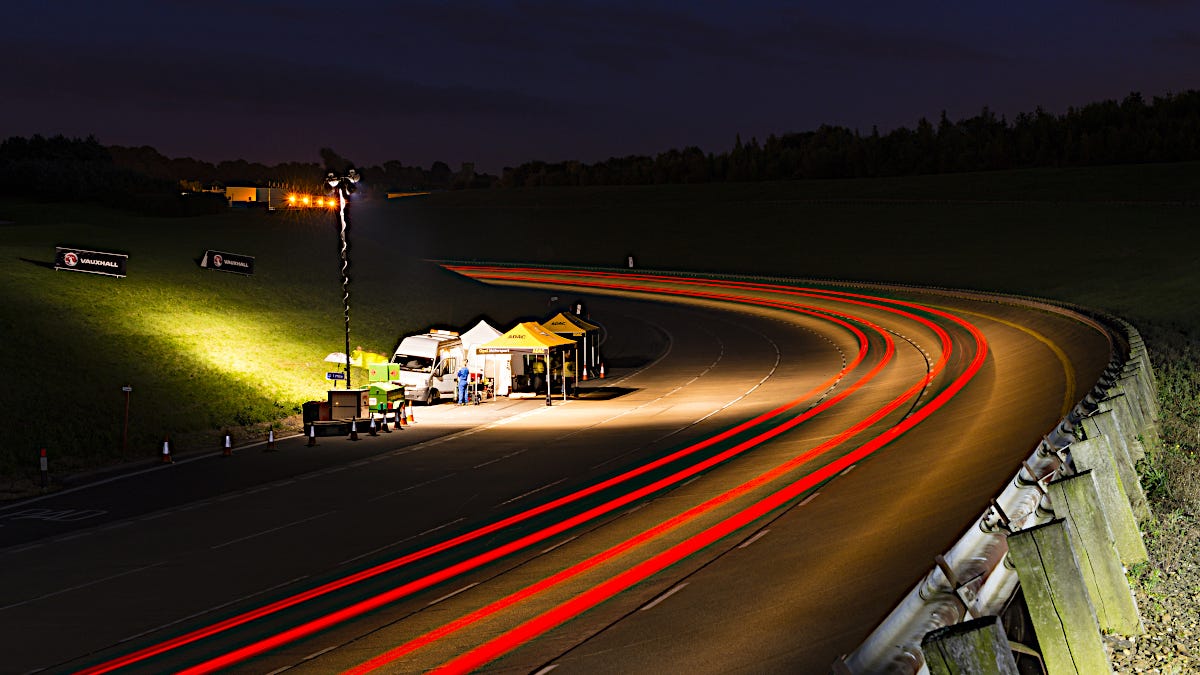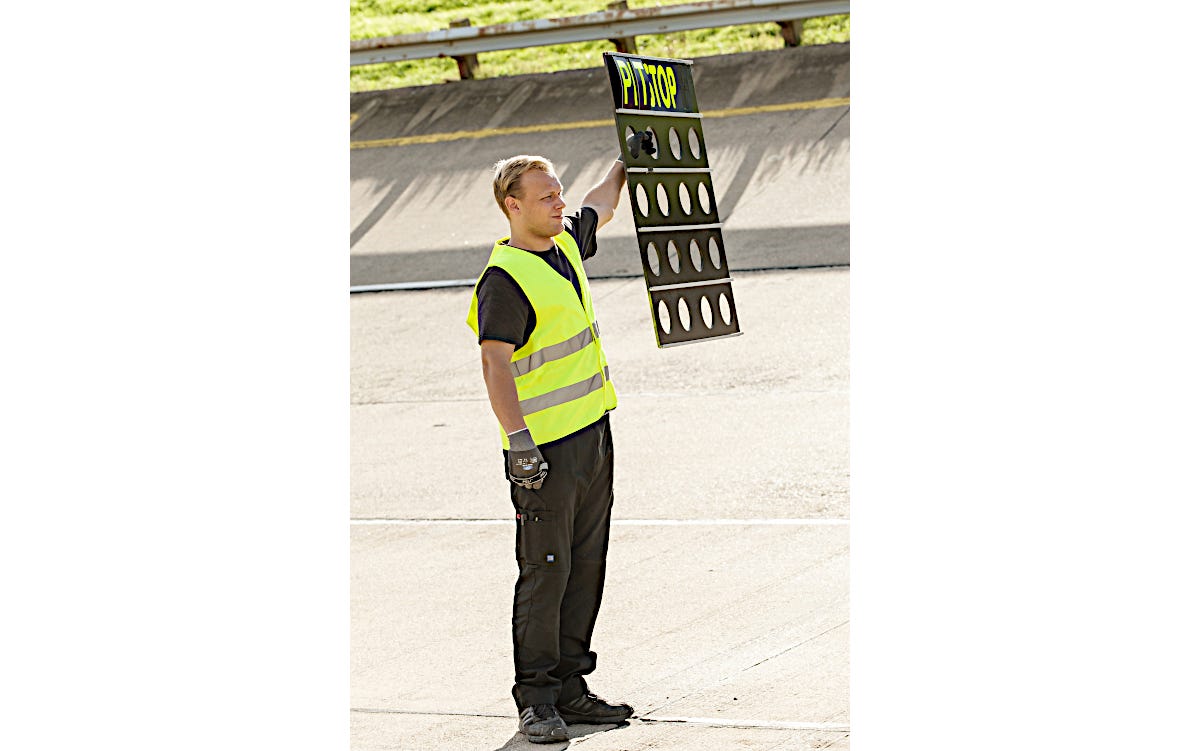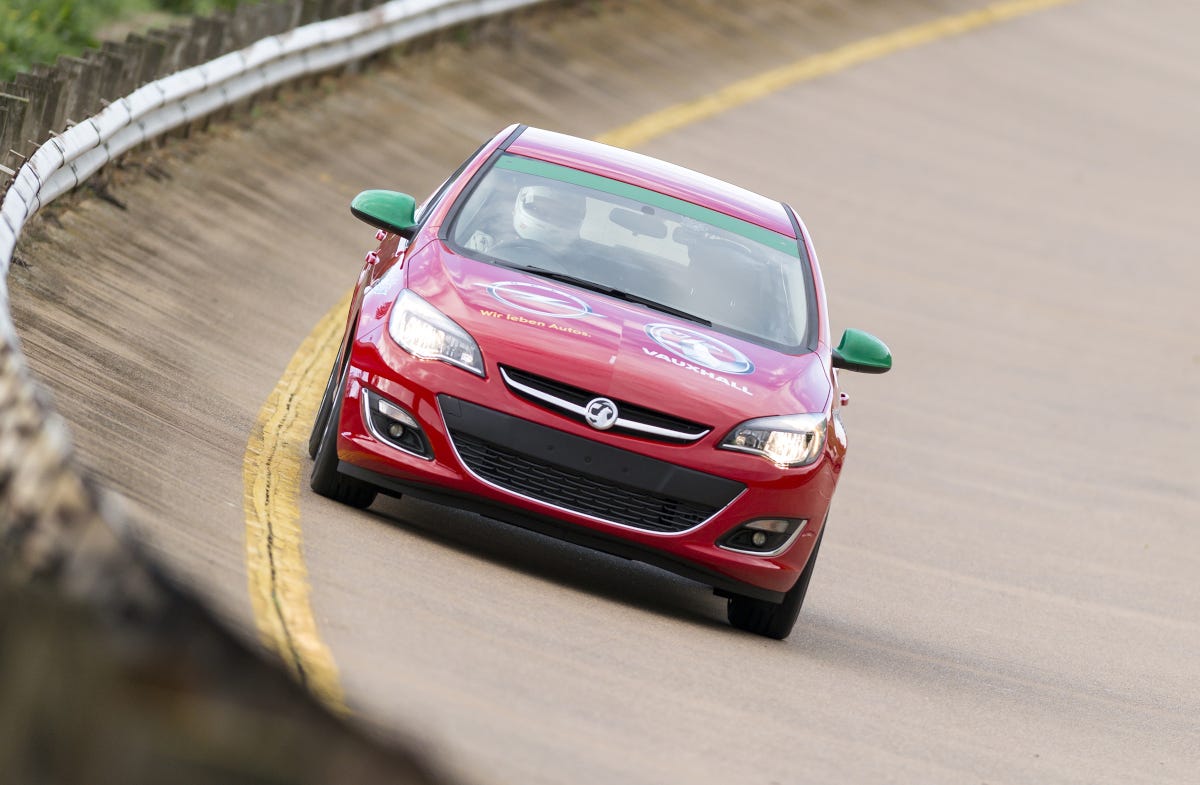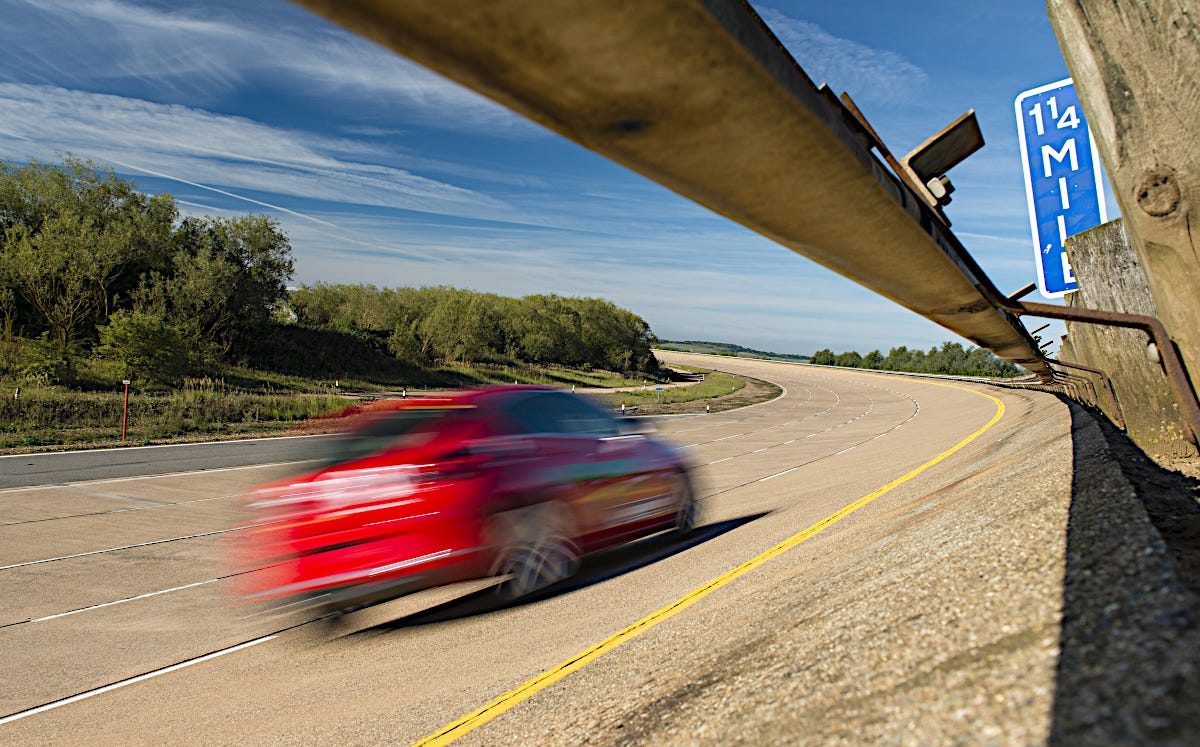Although it was still a secret at the time, sources close to the matter informed me in the summer of 2013 that Vauxhall was planning to set several speed records a few months later. I thought this sounded like an excellent project, but at the time I had no notion – and nor did anyone else – that I would become involved with it.
Some clarification might be required here for non-UK readers. Vauxhall, in this context, is a company which began building cars in 1903, and has since become effectively an offshoot of the German brand, Opel. (Cars sold as Opels in all other markets wear Vauxhall badges here.) From the 1920s until 2017, both were owned by General Motors, but they have since become part of the Stellantis conglomerate, which also includes Alfa Romeo, Chrysler, Fiat and Peugeot, among others.
I had a sort of relationship with Vauxhall back then. I wasn’t employed by the company – in fact, as an independent journalist, I adopted a critical position towards its products – but I was also one of two writers who were given the use of its high-performance Astra VXR to compete in the British Hillclimb Championship that year.
Hillclimbs around the world involve driving cars one at a time against the clock, a bit like skiing but in the other direction, but there are local variants. In the UK, the courses are usually narrow, frequently twisty and always short, and an Astra VXR can complete most of them in under a minute.
Taking part in events like this is no preparation for driving round a steeply banked two-mile circular bowl until the fuel warning light comes on, which was what would happen in the record attempt.
I had driven round a speed bowl before (actually the same one, at Millbrook in Bedfordshire) but my total experience amounted to less than a quarter of an hour. No wonder Vauxhall didn’t ask me to be one of the drivers. I wouldn’t have asked me either.
But then Vauxhall did ask me. People who had at first said they would take part later said they couldn’t. After a good deal of this sort of thing, Vauxhall had to scrape the bottom of the barrel, and there I was.
I became part of an international team which consisted of four other British journalists, two from Spain, one from Germany, another from Italy and three representatives of Vauxhall and Opel. We would be driving Astras, but not VXRs. The records we were aiming for were in the class for production cars with two-litre diesel engines, and that’s what these cars had.
I’m using the plural form because Vauxhall had decided (wisely, as it turned out) to make two attempts at the same time, in case one of the cars broke down. One of them was called the red car, because it was red. The other was called the green car, and it was red too, but it had splashes of green above the windscreen and on the door mirrors so we could tell which was which.
Other than a racing seat, a safety harness, a rollcage and special tyres, they were both completely standard, and had been chosen at random from six which had been observed being built by a representative of motorsport’s governing body, the Fédération Internationale de l’Automobile. They hadn’t even been properly run in; due to time pressures, by the time they reached Millbrook, they had been driven for only sixty miles.
Before they were taken there, I went to Millbrook myself, at Vauxhall’s well-judged insistence, for a coaching session with the Assistant Track Controller, Martin Newbury. Martin was patient and kind and amusing and encouraging, and after little more than an hour in another Astra diesel (not one of the record cars) he transformed me from being terrified of driving round the track at an indicated hundred and fifteen miles per hour, just a few feet away from the barrier at the top of the banking, to feeling perfectly confident at a hundred and twenty-eight. With his invaluable help, I was now ready to become a record breaker.
Or, if everything went to plan, a breaker of many records. In a single run, we would be aiming for eighteen in our class: six UK and twelve world, ranging in distance and duration from ten kilometres to twenty-four hours. The world twenty-four hour record would be easy because nobody had ever attempted it before, and we could establish a new one by driving round the track in first gear, but nobody wanted to do that.
There was an existing UK twenty-four hour record of 100.2mph, which we were confident we could beat. The stated target was 110mph, because that would match the number of years Vauxhall had been in the car business, and if we achieved it we would almost certainly break all the shorter records too.
Before we started, we were given a briefing by our team leader Volker Strycek, the first winner (back in 1984) of the German Touring Car Championship and now Opel’s Director of Performance Cars and Motorsport. He had barely spoken a full sentence before I realised I could trust him completely, which was very reassuring.
I was less reassured by what I heard shortly afterwards. Each driver would drive both cars, at widely-spaced intervals, for about an hour and three quarters before stopping to refuel and hand over to a waiting colleague. My first stint, I was alarmed to hear, would begin shortly before midnight, so part of the record attempt would involve me driving round a banked circuit in the middle of the night, something I had never done before.
I reported to the refuelling station two hours before I was scheduled to climb into the green car, in case the driver before me had to retire for some reason. It was suggested that soup might become available. "Volker," I asked, "if there is any soup, should I have it before or after I drive?" "It depends on the soup," Volker replied. "If it is chicken soup, before, no problem. Anything with beans in it, definitely not!"
There was soup, and it was tomato, and it was lovely, but it didn't appear until after I'd had my run. This (the run, not the soup) showed early signs of not going at all well. Driving on a speed bowl in almost complete darkness for the first time in my life was extremely alarming, and for the first ten minutes, with all limbs locked in place and my hands nearly wrenching the wheel rim off its spokes, I could think of nothing other than the fact that I didn't want to do this.
I could have stopped, and that would have been okay. Volker had said so at the briefing. Everyone would have told me they understood. Nobody would have shown whatever contempt they might be feeling.
But then I would have been the weak link. The one who failed. And that idea was much, much scarier than what I was doing now.
So, over quite a number of laps, I persuaded myself to release my grip on the wheel, and to relax my hands, arms, legs, shoulders and neck. I realised that steering left for nearly two hours without a break was going to become quite painful, so I adopted diverse slovenly postures which would have made road safety experts cry themselves to sleep but at least took the pressure off my arms.
Remembering Volker's advice – you mustn't think of the end of the run as your goal but something much closer, like the end of the lap – I went a step further and started predicting what would happen just beyond the horizon that sat permanently in the top left corner of the windscreen.
Like this: past the refuelling station, see the lights at Millbrook headquarters, go through a relatively featureless area, pass the one-mile marker, feel the car bouncing across the rough patch where the bowl had to be resurfaced a few years ago due to subsidence, pass the observer's post where people are checking that you're still running, remember that this is where we check the mirrors on the final lap to see if the other car is catching up, pass the one and a half mile marker where we'll start slowing on that lap, see the bridge coming into view, stretch each hand in turn, make sure that Volker can see you're in the middle of the lane because that's quicker and puts less strain on the tyres than if you hug the white line further down the banking.
And again: station, lights, featureless, one mile, bounce, observer's post, mirrors, this is where we'll slow down, bridge, stretch hands, make Volker proud. And again. And again. And again. And, eventually, start removing items from this pattern. Because now you don't need them. Because now you're having fun.
Those first ten minutes had been terrible, but a strange euphoria began to build up. After half an hour I was enjoying this. Then, gradually, I came to love it. Then it became the thing I most wanted to do in the whole world. Then: is it really possible that there are people alive right now who aren't turning left at a hundred and thirty? How peculiar, how beyond imagining. Then I'm being told over the radio that I have to stop in ten laps, but I don't want to stop. I never want to stop. Don't make me stop.
I stopped, feeling ridiculously, stupidly happy. Volker said I should go to bed as soon as I’d eaten my soup (“I need fresh drivers in the morning”), and I did, but I was so excited about what had just happened that I couldn’t sleep.
Several hours later, I went out in the red car, and found myself facing a new problem. I was now so familiar with trying to break speed records in the dark that doing so in daylight felt very intimidating. This time I could see everything around me, which led to all sorts of worrying thoughts. What would happen if the car went wildly out of control? What would I hit, and how hard, and how much would it hurt?
Towards the end of this run I saw the green car sitting at the refuelling station, long before its next scheduled stop. Ten minutes later it was still there, having a new driveshaft fitted. It had broken the ten-kilometre record, but it was clearly out of contention for the twenty-four hour ones, and it occurred to me that for the next thirty minutes or so the red car’s chances of achieving those depended entirely on me not doing anything stupid.
Uncharacteristically, I didn’t, and nor did anyone else. Including the refuelling stops, and the lap it took to bring the car up to full speed after each of them, we had averaged 125.101mph in the round-the-clock run, beating our targets by a handsome margin, and broken all the other records too.
At the time of writing, they still stand. Nobody has ever tried to beat them, and although perhaps one day somebody might, they will have been ours for at least a decade when that happens, and perhaps for much longer. That’s not necessarily something to boast about, but I find it quietly satisfying.
All images copyright Vauxhall.
Recent posts
The Second Queen of Hirta chapter 14: As the animals do
The wonderful art of Helene Schjerfbeck
We Need To Talk, Mrs Kafka









